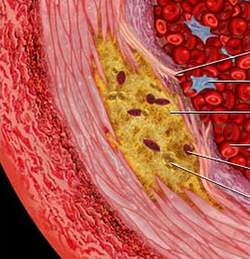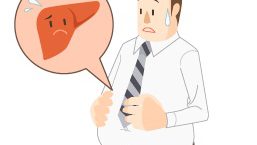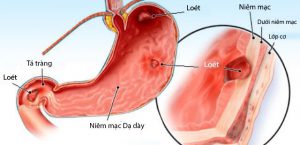
Atherosclerosis
1. Risk factors.
Up to now, people do not know the cause of VXD, but risk factors are known. call of duty black ops pc Download
– Age ≥ 55, arteries have reduced elasticity and hardening of the arteries due to the aging process, this is one of the factors of VXD.
– Men suffer from VXD at a higher rate than women, but when women reach premenopausal age, the rate of VXD between men and women is equal.
– Genetic factors and family characteristics: Gene decoding research is still ongoing, but in reality, many families with multiple generations of VXDM have not been researched to explain why?
– Smoking: ≥ 10 cigarettes per day will increase sympathetic nerve activity, cause arterial constriction, reduce elasticity, creating favorable conditions for atherosclerosis.
– Long-term high blood pressure (≥ 140/90 mmHg) will promote the occurrence of atherosclerosis and the development of complications.
– Obese: people with body mass index ≥ 30.
– Hyperlipidemia : increased cholesterol ≥ 5.5 mmol/l, increased triglycerides ≥ 2.3 mmol/l, increased VLDL and LDL, decreased HDL…
– Increased blood glucose: fasting (6.1-6.9 mmol/l), impaired blood glucose tolerance (when doing a blood glucose tolerance test, blood glucose is 7.8-10.9 mmol/l); diabetes, especially type 2 diabetes (fasting blood glucose ≥ 7mmol/l, or after blood glucose tolerance test ≥ 11 mmol/l).
– Lack of physical activity : for people who are sick at work, paralyzed…, intellectuals, managers, working in the office 6-8 hours/day, with little physical activity, more susceptible to VXD than workers…
– Psychological stress : increased emotions, stress in work life, prolonged conflicts in family and social relationships… VXD occurs at a higher rate.
– Eating salty food: Normally, a person eats 2-6 grams of salt a day. If eating salt < 2 g/day is called salty eating, > 6 g/day is called salty eating. People who eat salty foods will exceed the kidney’s Na+ excretion threshold, increasing blood Na+ concentration, increasing water retention, causing increased fluid volume in blood vessels, causing increased peripheral resistance leading to increased blood pressure.
In fact, there are people who do not eat salt but can still have high blood pressure due to increased sensitivity to salt receptors.
High blood pressure will promote atherosclerosis.
– Increased blood uric acid concentration, causing damage to the arterial endothelium, is the first basis for the development of plaque.
2. Pathogenesis.
+ Because the cause of VXDM is still unclear, the pathogenesis is only a hypothesis.
– Damage to the artery wall due to different causes (for example: inflammation, trauma, allergies, immunity…) is the first basis for the formation of atherosclerotic plaque.
– Mononuclear macrophages (monocyte) on the cell membrane of the macrophage have many receptors that attach (carry) lipids. When the arterial endothelium is damaged, the macrophage penetrates the vessel to the middle layer of the artery, the cells Necrosis leaves behind lipid components, represented by cholesterol, which is the nucleus of the atherosclerotic plaque.
– Monoclonal hypothesis: at the site of damage, the artery produces anti-self substances, which is the basis for the development of atherosclerotic plaque.
– Hypothesis of reduced lipase enzyme activity, causing reduced lipid decomposition.
– Arterial endothelial cell dysfunction is also a basis of atherosclerosis.
. Reduce secretion of vasodilator factors such as bradykinin, nitrogen oxide (NO), endothelium derived relaxing factor (EDRF), and endothelial cell hyperpolarization factor (EDHF). : endothelium hyperpolaricing factor), PGI2 (prostaglandin I2), PGE2 (prostaglandin E2).
. Increased secretion of vasoconstrictive factors such as: endothelium derived constricting factor (EDCF), PGH2 (prostaglandin H2), thromboxane A2, other endothelin stimulates proliferation of smooth muscle cells middle layer of the artery.
– Mitochondrial hypothesis.
Mitochondria of arterial endothelial cells secrete enzymes that damage arterial walls, creating the basis for the development of atherosclerotic plaques.
– Lipid hypothesis, there are many grounds to conclude that lipids play an important role in atherosclerosis, for example:
. +The core of atherosclerotic plaque is cholesterol.
. +People with blood cholesterol levels > 6 mmol/l are susceptible to atherosclerosis , 10 times higher than people with cholesterol levels < 6 mmol/l.
If rabbits were fed a cholesterol- rich diet , after 6 months atherosclerotic plaques appeared at a higher rate than the control group.
Therefore, people with independent or combined increases in lipid components in the blood (such as: cholesterol, triglycerides, VLDL, LDL; reduced HDL…) are both at high risk and participate in the pathogenesis of VXD. .
– There are a number of other hypotheses but they are not very convincing.
So what is the process of atherosclerotic plaque formation?
When the arterial wall is damaged (endothelium and media), macrophages penetrate the media into the media of the arterial wall, carrying in the cytoplasm lipid components (cholesterol) (called foam cells ) . ) accumulate, concentrate, then damage the cell membrane, the cell dies leaving behind lipid strips; Here platelets, red blood cells, white blood cells, blood clotting, Ca++ deposition and membrane formation surround the atherosclerotic plaque. Atherosclerotic plaques always secrete enzymes that destroy the membrane, causing the membrane surrounding the plaque to crack, activating the blood clotting process, forming blood clots that cause acute anemia in the tissue below the blockage (eg. : heart attack)





Trả lời